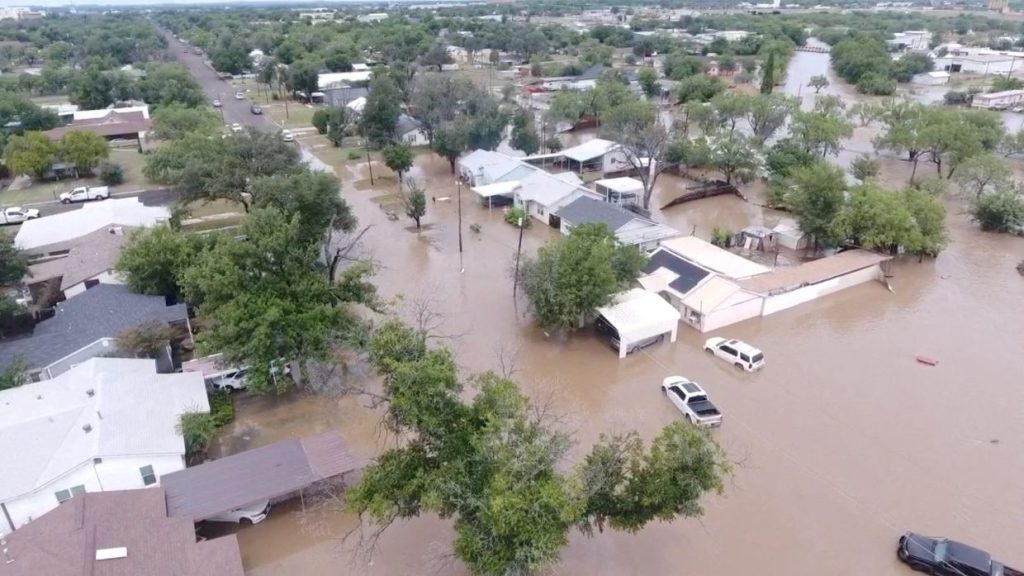Texas Floods Unleash Torrent of Misinformation on Social Media
The catastrophic floods that ravaged Texas over the weekend, claiming over 100 lives and leaving dozens missing, have not only devastated communities but also ignited a firestorm of misinformation on social media platforms. As rescuers tirelessly searched for survivors amidst the wreckage, a deluge of false narratives, originating from both ends of the political spectrum, flooded online spaces, further compounding the tragedy. While genuine concerns about disaster preparedness and response are warranted, the spread of baseless claims and conspiracy theories only serves to obscure the facts, hinder recovery efforts, and erode public trust.
On the left, unsubstantiated allegations circulated, blaming staffing cuts at the National Weather Service (NWS) under the Trump administration for purportedly compromised forecasting abilities. These claims, amplified across platforms like X (formerly Twitter), ignored the reality that NWS forecasters, despite facing budgetary constraints, issued timely and accurate warnings well in advance of the devastating floods. Experts confirmed that the NWS provided ample notice, with numerous warnings issued for the hardest-hit areas, including Kerr County. The catastrophic nature of the event stemmed not from forecasting failures, but from the suddenness and intensity of the rainfall, coupled with the unfortunate timing in the middle of the night, which complicated effective dissemination of warnings and hampered evacuation efforts.
Conversely, right-wing conspiracy theorists propagated a different brand of misinformation, falsely attributing the floods to government-orchestrated weather manipulation through cloud seeding. This unsubstantiated theory, echoing similar conspiratorial narratives surrounding past natural disasters like Hurricane Ian and flooding in Dubai, gained traction despite lacking any scientific basis. Experts unequivocally dismissed the notion that cloud seeding played any role in the Texas floods, emphasizing the natural meteorological factors that led to the extreme rainfall and subsequent devastation. This type of misinformation not only distracts from genuine issues requiring attention but also fosters distrust in scientific expertise and governmental institutions.
The rapid spread of these conflicting narratives highlights the challenges posed by misinformation in the digital age, particularly during times of crisis. As traditional media outlets grapple with the influx of false information online, even local news sources have fallen prey to the allure of viral, yet unverified, stories. Kerr County Lead, a local publication, was forced to retract a widely shared report about the miraculous rescue of two girls clinging to a tree, illustrating the vulnerability of news organizations to the pressures of social media and the imperative for rigorous fact-checking, especially in emotionally charged situations.
The proliferation of misinformation surrounding the Texas floods underscores a broader pattern observed following natural disasters, where social media platforms become breeding grounds for conspiracy theories and unfounded accusations. This phenomenon is often exacerbated by reduced content moderation and a decreased reliance on human fact-checkers, creating a fertile environment for the rapid dissemination of false information. The convergence of heightened emotions, a desire for explanations, and the ease of sharing unverified claims online contribute to the virality of misinformation, often eclipsing accurate reporting and hindering informed public discourse.
Combating this infodemic requires a multi-pronged approach involving increased media literacy, enhanced fact-checking efforts, and greater accountability from social media platforms. News consumers must develop critical thinking skills to discern credible sources from purveyors of misinformation, while journalists must prioritize accuracy and verification over the pursuit of viral narratives. Social media companies, in turn, bear a responsibility to implement more robust content moderation policies and invest in effective fact-checking mechanisms to stem the tide of false information that often accompanies crises like the Texas floods. Only through collective efforts can we ensure that accurate information prevails, allowing communities to heal and rebuild without the added burden of battling misinformation.


